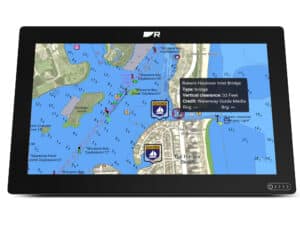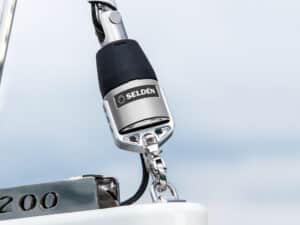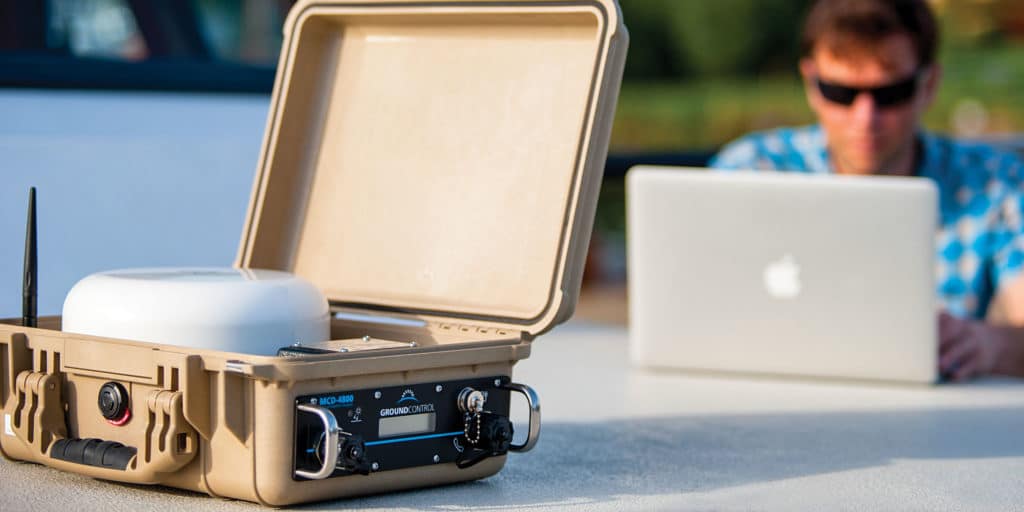
I’m lucky to have a wife who is incredibly sympathetic to my sailing and writing habits, but I knew I was pushing it when I announced a last-minute editorial assignment that would take me from my Seattle home to the northern tip of Vancouver Island and back, just as we were closing on our first house. The itinerary involved ample wilderness punctuated by sporadic cellular or Wi-Fi coverage, and the boat didn’t carry a satellite-communications system, giving my wife a great opportunity to became well acquainted with our real estate agent and the finer points of home buying. Fortunately, a new breed of low-bandwidth satellite-communication options now exists that can deliver the latest weather forecasts and news from ashore.
Satellite communications first began to appear regularly on recreational sailboats in the early 1980s, starting with C-band frequencies (6 MHz) and progressing to Ku-band (12 to 14 MHz) and Ka-band (26.5 to 40 gigahertz) frequencies. While effective and reliable, these systems require expensive gyrostabilized antennas that can be hard to fit aboard modest cruising boats, not to mention the cost of data plans that are prohibitive to all but the well-heeled yachtsman.
A decade later, in the late ’90s, satellite phones arrived to give mariners a much smaller, less expensive communications option; however, these devices can still generate eye-watering bills, depending on how much data is consumed. Today’s sailors, though, are able to tap into a number of devices that provide much lower- (and slower) bandwidth satellite connectivity to access the information and communications they need without crushing their cruising kitty. Here’s a look at the types of technology out there, how they work and the benefits they provide.
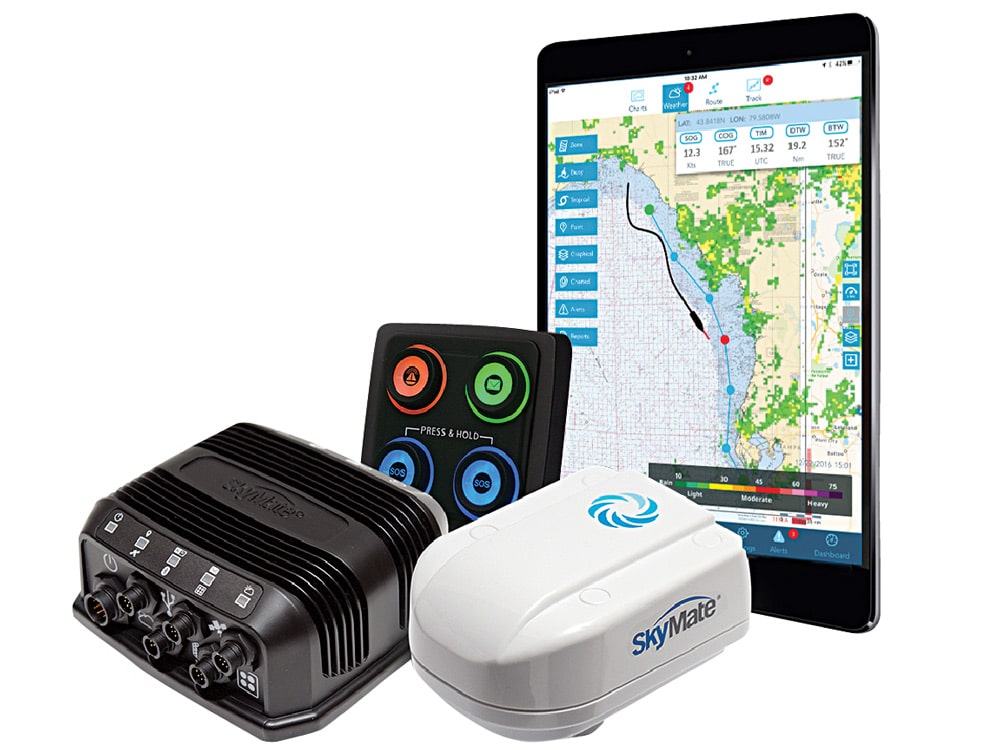
One of the newest low-bandwidth players is mazu by SkyMate. Mazu is an app-based weather and email system that uses mazu’s fixed-mount mSeries black-box module, hockey-puck-style antenna and keypad to deliver connectivity via Iridium’s global Short Burst Data (SBD) satellite service. On board, the SkyMate gear is networked with an iPad that’s running mazu’s Marine app (free). Mazu users can send and receive email and text messages globally. When available, National Oceanic and Atmospheric Administration weather alerts and Nexrad graphic weather are also accessible. Users can also access NOAA raster charts and Navionics vector cartography (this requires a separate Navionics subscription) to navigate with mazu’s app. In all cases, mazu users send and receive small packets of information over Iridium’s SBD network; should the connection be disturbed mid-upload/download, the system restarts where it left off rather than restarting from scratch. This feature reduces data-transfer fees.
Critically, mazu connects users to SkyMate’s servers, not to the internet directly, which allows SkyMate to apply a proprietary compression algorithm to make the data packets as small and as cost effective as possible.
“It typically takes 30 seconds to a minute to send an email, and maybe five minutes to download a GRIB file,” says Craig Myers, mazu’s product manager. “We’re not talking about megabytes or gigabytes here. We use compression and do enough work with the data that we’re only sending kilobytes.”
For example, explains Myers, a 200-nautical-mile GRIB file that’s downloaded from SkyMate’s server might weigh in at a featherweight 300 to 400 bytes, meaning that cruisers can download a lot of forecasts and send or receive a ton of email using the 8,000 bytes of data that are included with Skymate’s midlevel monthly data plan. All SkyMate subscription services can be winterized, meaning they can be suspended when the boat is not in use.
Additionally, mazu provides users with an SOS button that contacts GEOS Worldwide’s privately operated International Emergency Response Coordination Center, which in turn passes emergency information to the correct rescuing authority, such as the U.S. Coast Guard. The SOS functionality supports two-way communication via email or texts with the emergency center or Coast Guard. However, sailors should not rely on it (or any of the other devices mentioned in this article) to replace a properly registered EPIRB.
Finally, users can also purchase Sentry, SkyMate’s vessel-monitoring and tracking hardware and services (sold separately), which uses the mSeries’ connectivity to send alerts should an onboard sensor get tripped.
SkyMate
709-961-5800
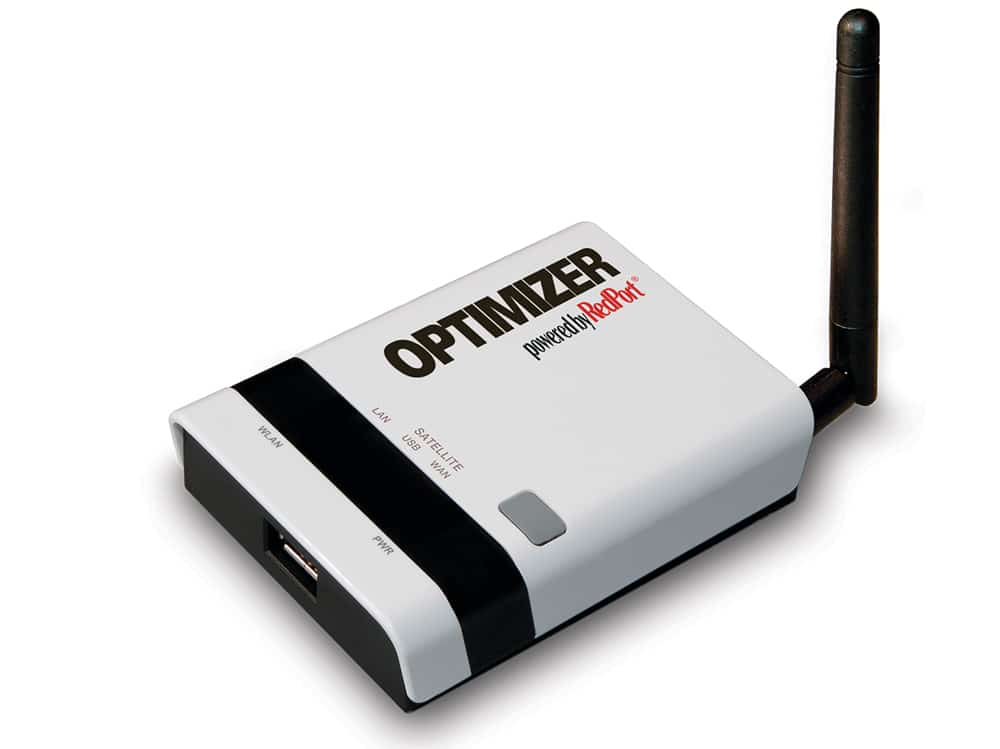
Affordable Email
Given that most satellite-communications systems’ airtime bills are a function of the amount of data used, one clever practice involves using third-party software to shrink the amount of data that’s being transferred. XGate’s suite of apps and services allow users to reduce the size of their incoming and outgoing email by up to 95 percent by directing it through XGate’s email servers. Cruisers can either use an XGate email account or forward their regular email through XGate’s servers, which apply significant compression, thus reducing the amount of transferred data.
XGate provides virus scanning and spam filters to all emails while also employing its BigMail feature that searches incoming mail for large and expensive-to-download attachments and images. BigMail gives users the choice of instant gratification or the option to wait and open those files until they’re online using a less-expensive internet connection. Users can also employ XGate’s additional XWeb service, which enables fast and affordable Web access by scything ads and pop-ups and compressing webpages by three to five times their original size.
XGate is available as a Web service that users can subscribe to for as few as seven days or for as long as two years, and it comes bundled with PredictWind’s Offshore weather forecasting at no additional charge. Sailors can download GRIB files and use the detailed report within PredictWind’s GRIB viewer for weather routing and departure-time planning.
Users can share this service with multiple wireless devices by using XGate in concert with RedPort’s Optimizer, which takes any internet-protocol-based satellite-data signal and shares it via a hotspot with multiple networked Android and iOS smartphones and tablets, and computers running Apple OS X, Linux or Windows. RedPort’s Optimizer features a robust firewall that blocks all satellite traffic except that which is sent over XGate (or other RedPort-certified data services), as well as a feature that significantly accelerates the email transmission speed. And, because this is 2018, RedPort’s Optimizer also allows you to update your social-media feeds while enabling vessel tracking via RedPort’s tracking site.
RedPort and XGate
877-317-7283
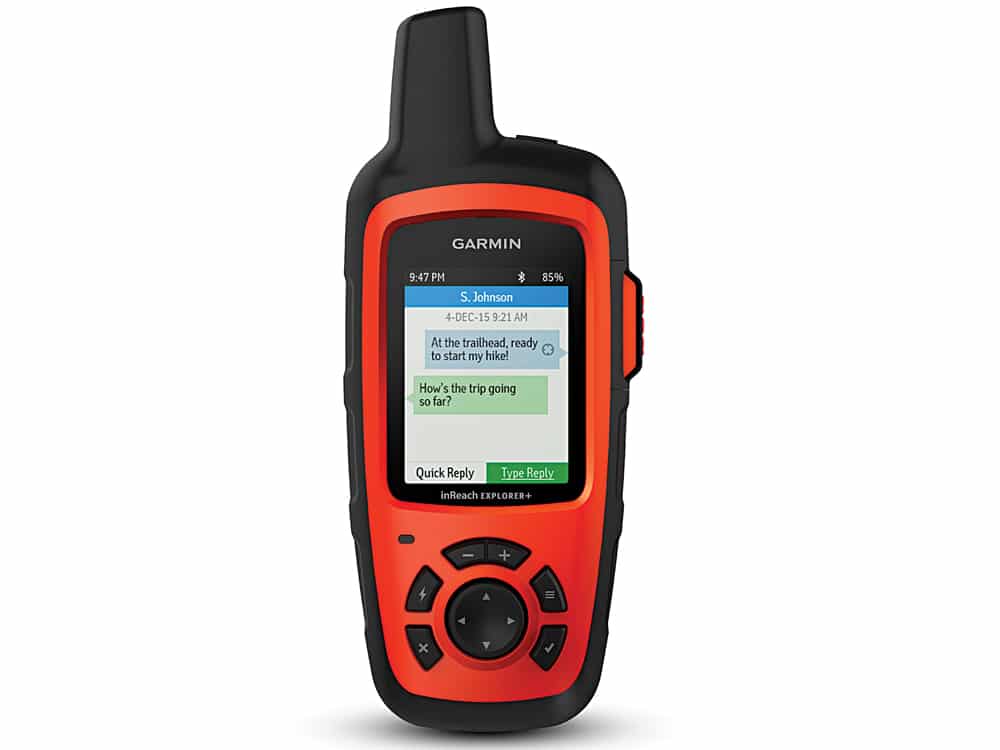
It’s Personal
Devices such as Garmin’s inReach or the SPOT Gen 3 give users a huge amount of operational flexibility within their small, lightweight, portable bundles.
Garmin inReach devices allow users to send and receive texts globally via Iridium’s SBD network, and to download the latest weather information (subscription levels include basic, premium or marine) based on information from Ocens, Garmin’s contracted marine-weather provider. Additionally, inReach can be used for navigation and for two-way SOS communications with GEOS ’ International Emergency Response Coordination Center or other rescue authorities. On a daily basis, sailors can send pre-scripted or custom-written texts to any phone number or email address, such as an “all’s well” message to friends and family. Alternatively, users can use Bluetooth to pair their inReach with their Android or iOS mobile device equipped with Garmin’s free Earthmate app. This delivers all of the inReach’s functionality to a smartphone or tablet and allows users to download NOAA nautical charts and navigate using the inReach’s shared GPS information.
“It’s capable of sending a tracking message with the sailor’s location to a MapShare page so that people can follow along on their voyage and participate from home,” says Chip Noble, Garmin’s senior product manager for inReach. He adds that inReach is designed to keep data costs low. “The marine weather forecast is an SBD message that gets formatted on the device. It’s the same size as standard text messages, so there’s no discernable difference in download speed. With clear views of the sky, we’d expect the turnaround for a weather forecast to be measured in minutes.”
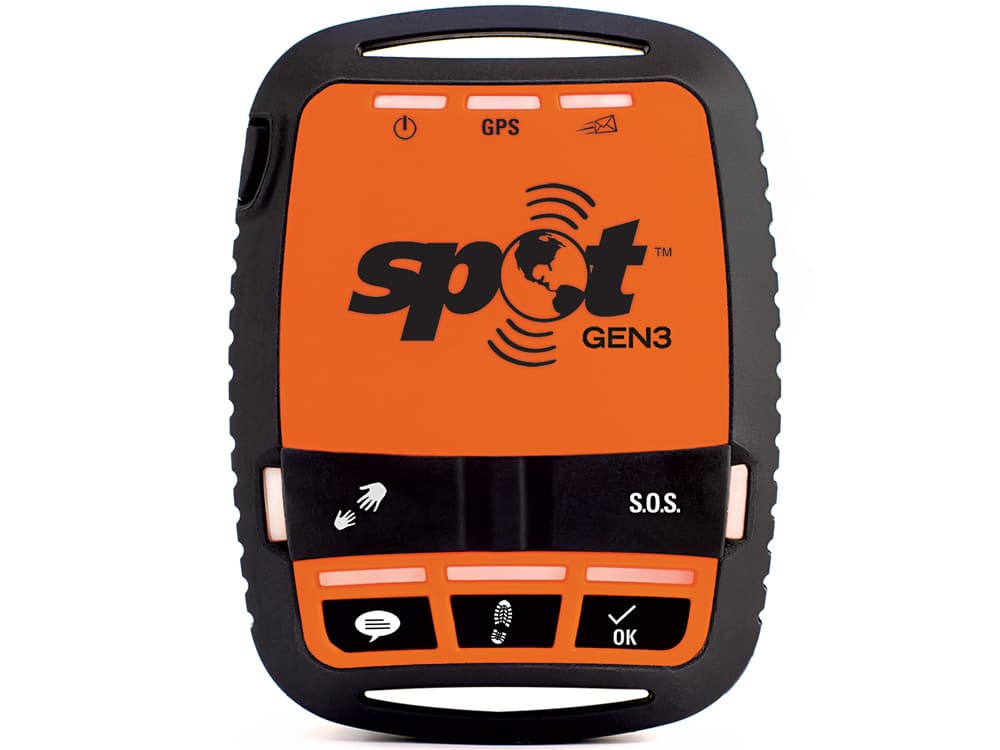
Garmin makes two versions of its communications tool, the inReach SE+ and the inReach Explorer+. They share features, including the ability to navigate, but the Explorer+ goes a step further and includes full-feature GPS capability and maps and charts. As mentioned earlier, both will pair with smart devices, letting you navigate on a larger screen. InReach devices carry an IPX7 rating, which means they are designed to withstand submersion in up to 3 feet of water.
A SPOT Gen3 will also let friends and family track your progress remotely. You can use it to send messages that are pre-scripted on a computer, along with GPS coordinates, to preselected contacts. However, SPOT Gen3 offers limited navigational and communications utility compared to an inReach device. That said, SPOT Gen3 users can send SOS messages, along with their GPS position information, to GEOS’ emergency response center. Like inReach, SPOT requires an active satellite-service subscription. It is also made to withstand the elements and carries an IPX6 rating.
Garmin
800-800-1020
SPOT Gen 3
1 (866) OK1-SPOT

High-Seas Hotspots
Satellite hotspots connect to the internet and then pair with other wireless devices on board in the same way as you might connect your smartphone using Wi-Fi while sitting at your local coffee shop. The three biggest players in this market are Inmarsat’s IsatHub, Iridium’s Go and Globalstar’s Sat-Fi.
Inmarsat’s IsatHub terminal connects to Inmarsat’s I-4 satellite and ground network, which provides global 3G connectivity pretty much everywhere except the remote high latitudes. The hub then uses its built-in Wi-Fi access point to deliver voice, data and texts to smart devices equipped with Inmarsat’s IsatHub control and voice apps. The IsatHub terminal features a firewall and multiple security levels, and allows users to control each networked device in order to manage satellite costs. The terminal sports an internal lithium-ion battery, a DC power-supply connector and an AC power adaptor, as well as an IP65 water-resistant rating. While the IsatHub’s advertised data-transfer speeds (384 Kbps downloads, 240 Kbps uploads) aren’t competitive with satellite domes, it’s the fastest satellite hotspot discussed in this article.
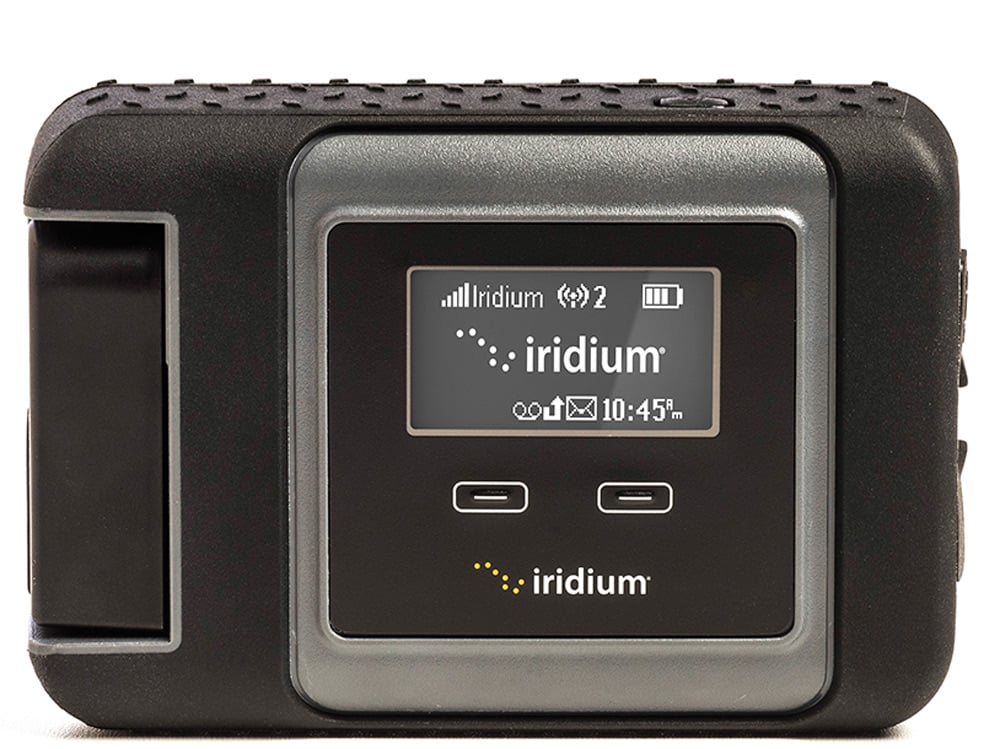
The Iridium Go connects up to five wireless devices to the internet via Iridium’s global satellite network. Sailors can make voice calls, send and receive texts and emails, and make SOS calls irrespective of their latitude or longitude; however, Go’s standard data-transfer speed of 2.4 Kbps requires some patience when downloading larger files, such as weather GRIBs. If you’re planning a trip to, say, Antarctica, the Go will keep you connected.
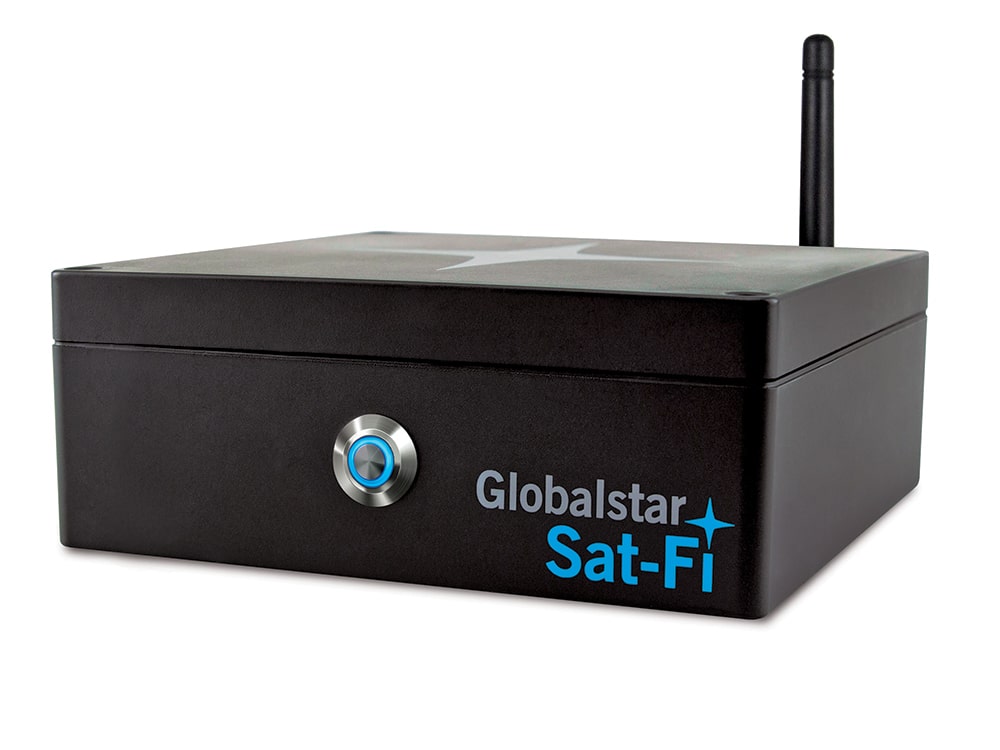
As with the other two hotspots, Globalstar’s Sat-Fi allows users to place and receive voice calls and texts and use email, and it can simultaneously support up to eight wireless devices. The Sat-Fi delivers data-transfer speeds of 9.6 Kbps, and it supports regular 10-digit calling. Additionally, Globalstar’s Sat-Fi supports caller ID and gives users the ability to use each mobile device’s stored contacts. Those going to remote areas, however, should consider GlobalStar’s coverage map. Unlike the Iridium network, GlobalStar has gaps in its coverage footprint.
For sailors who need higher bandwidth but who don’t have deck or mast space for a full-scale satellite dome and system, there is a more robust option, Ground Control’s MCD-4800. Sometimes called the “Football,” because it travels in its own case, sort of like the nuclear football aides to the president carry, the device links to Inmarsat’s Broadband Global Area Network (BGAN) to become a portable, global internet hotspot. It delivers uplink speeds of 448 Kbps and downlink speeds of 464 Kbps to nearby wireless devices. The Football comprises a Hughes 9450 BGAN In-Motion C11 Antenna, a SIM card, nickel-metal hydride batteries and other components that are housed in a robust Pelican 1450 flyaway case. Collectively, these pieces, plus Ground Control’s proprietary electronics and software, create a finished product that delivers connectivity in all but the highest of latitudes.
Inmarsat
877-748-4320
GlobalStar
877-452-5782
Ground Control
800-773-4600
All About The Benjamins
While the technologies described in this article are considerably less expensive than gyrostabilized satellite terminals (read: pricey antenna domes), there are still hard costs involved, for both hardware and subscription services. When it comes to stretching dollars, SPOT Gen 3 and Garmin’s inReach are great go-to devices because their hardware costs range from $170 to $450, respectively, and their monthly service fees range from $20 to $80 per month. A mazu by SkyMate can be purchased for $995 in hardware, and service runs about $40 per month. Offshore email such as XGate’s offerings require roughly $150 in hardware, and airtime rates run from $20 for seven days to 24 months for $519. Inmarsat’s IsatHub, Iridium’s Go and Globalstar’s Sat-Fi are more expensive options, with hardware fees running at roughly $750 to $1,200. Monthly service plans start at roughly $60. For sailors who want to go big, the “Football” goes for a cool $12,995, with data rates starting at 100 megabytes for $525.



